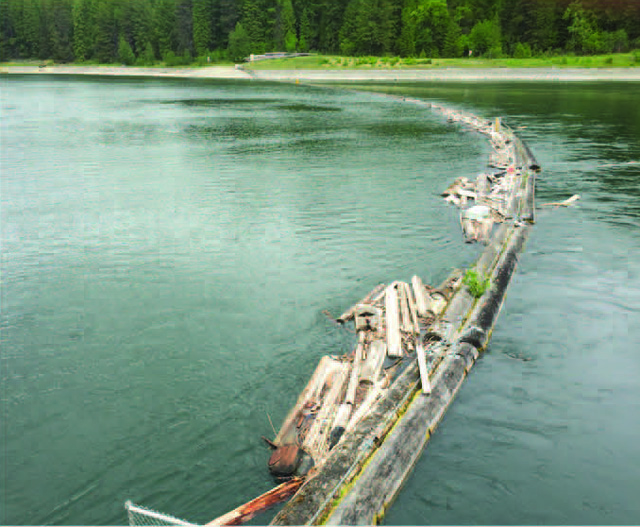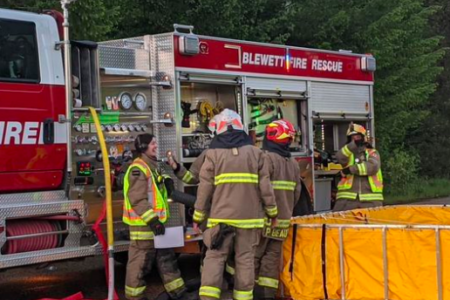Kootenay Canal to get boom replacement in spring of 2018
BC Hydro announced in a media release the replacement of the current log boom at Kootenay Canal & Generating Station
in the spring of 2018.
The log boom is located approximately 250 metres upstream of the canal headworks on the Kootenay River, approximately 14 kilometers downstream of Nelson, B.C., and protects the canal and power intakes from floating debris.
BC Hydro said the work is necessary because the current log boom is deteriorating from wear and exposure, allowing reservoir debris to pass into the canal.
“Debris can cause potential dam safety and operational issues. At Kootenay Canal, debris also has the potential to damage the special lining in the canal that was recently installed
to manage dam safety risks,” the release said.
“This could lead to increased risks to the safety and integrity of the canal.”
BC Hydro said the new boom will better intercept debris and improve public safety.
“Although we have traditionally used log booms to intercept debris, we are moving towards new materials and designs that are expected to provide improved longevity, performance and public safety,” the release said. “The new boom will be made out of steel, which we expect to have a longer lifespan and superior performance.”
BC Hydro said the new boom will also feature enhanced public safety features, including improved signage and markings to help boaters avoid the boom and the hazardous areas downstream.
Construction is expected to begin in February or March 2018 and to be completed in April 2018. During the construction period, we do not expect construction to require any closures to roads or trails, except very brief periods for delivery of materials to the construction area.
Protecting the Environment and Potential Archeological Sites
BC Hydro said this project is within Kootenay River’s fish-bearing area. Our early assessments have indicated that potential impacts to fish and wildlife are unlikely, particularly because the work is not expected to involve disturbance of the river bed or other fish and wildlife habitat.
“Although we are not aware of any specific archaeological sites in close proximity to the existing boom, we recognize the area has a high potential for heritage resources along the banks of the Kootenay River that are currently unknown,” BC Hydro said.
“To minimize ground disturbance in the area as well as the cost to ratepayers, we will re-use the existing shore anchors for the new boom. This will help to minimize the potential for disturbance of any such sites. If new anchors or development of previously undisturbed ground is required, we will perform an Archaeological Impact Assessment to identify sites of potential heritage interest.”
About Kootenay Canal
The Kootenay Canal headpond is located on the Kootenay River, approximately 14 kilometers downstream of Nelson, B.C. Water from the Kootenay River enters the canal from Corra Linn headpond and returns to the river at South Slocan after passing through the canal and powerhouse.
Kootenay Canal has a total capacity of 580 MW. Power generated at Kootenay Canal plant is fed into BC Hydro’s provincial grid via two 230 kV transmission lines running south to Selkirk Switching Station, near the Seven Mile Generating Station as well as other transmission lines to FortisBC stations.
Photo Caption: Top photo shows the existing log boom on Kootenay Lake.


























